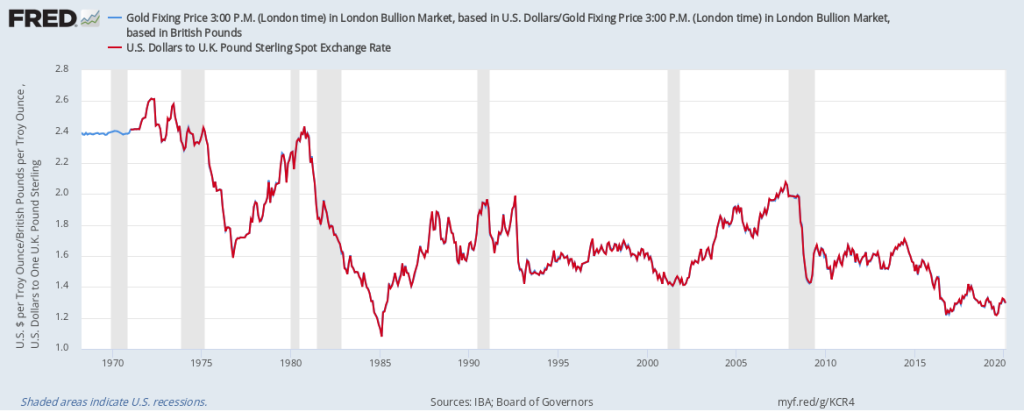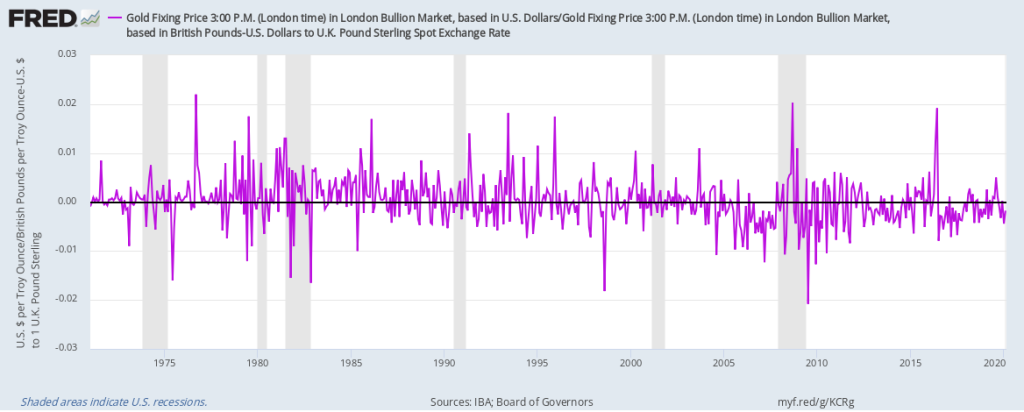This FRED graph shows several exchange rates relative to the U.S. dollar. We start with the date January 6, 2020, where we set the index values equal to 100 for all these exchange rates so we can compare their relative changes since then. Through the end of February, most of these exchange rates have remained relatively stable; however, they began to increase in March. Brazil’s and Mexico’s exchange rates spiked, and their currencies have depreciated nearly 30% since the beginning of January.
In March, the COVID-19 pandemic became more severe, affecting overall economies as well as exchange rates. Reduced global demand for commodities such as oil has sent commodities prices crashing; Mexico and Brazil are major commodities-exporting countries. Canada’s and the U.K.’s exchange rates spiked at the beginning of March, but they seem to have recovered by the end of March. The euro seems to be unaffected by the global pandemic, at least compared with the U.S. dollar. China’s exchange rate, on the other hand, has remained constant despite the coronavirus originating there. Unlike the rest of the countries in our sample, which have floating exchange rates, China has a fixed exchange rate pegged to the U.S. dollar.
Large exchange rate movements can have consequences for economic growth, inflation, trade, and sovereign risk. Commodity-dependent economies and developing countries are most susceptible to this risk. It will be important to monitor the impacts of the coronavirus on international markets and economies because they will impact our interconnected, global economy.
How this graph was created: Start with a graph of any exchange rate. From the “Edit Graph” panel, use the “Add Line” tab to search for each exchange rate by its code and add it to the graph. Under “Edit Lines,” go to the dropdown box “Units” and select “Index (Scale value to 100 for chosen date).” Immediately below, under the heading “Select a date that will equal 100 for you custom index,” type in “2020-01-06.” Do this for all lines. For the euro and the pound, the original series have the U.S. dollar in the numerator, so we have to transform them to make them comparable to the other series. To do this, go to “Formula” and type 1/a and click “Apply.”
Suggested by Brian Reinhold and Yi Wen.



